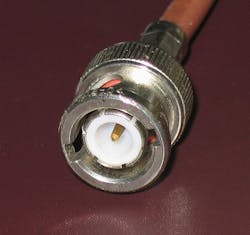I love IP. At my last home, I didn't even run phone lines, I just put in a Cisco network and Ethernet ports to every room and whole house 802.11 wireless. My video system there used a few off-brand IP cameras and network attached storage. It was pretty rudimentary, but the point is I love IP. So it's hard for me to say this, but I need to say it. Don't count analog video out yet.
OK, it maybe be a flat technology area with no forecast for growth, but it's still the big part of the market. There are still plenty of dealers we know that tell us they are sticking with analog video because they can trust it and don't have to deal with networking issues. They know how to do it, and it works. I would still argue that they need to be preparing themselves for IP video, because the technology will eventually flip the market. And just as there are dealers who haven't made the transition, there are end users who still prefer analog 1) because of the lack of PTZ latency, or 2) because small analog systems still are less expensive than their IP counterparts, or 3) because they already have the coaxial cable in place.
No, it may not give you the high resolution video you get from today's HD and megapixel network cameras (unless you buy into the HDcctv push, or get one of these really cool new systems that allow network type of transmission over coax), but in a lot of environments where the shots are close range and the scene is well lighted, it gives the video quality you need.
We in the trade media are probably as much at fault as anyone, since we have been promoting IP video technology more than analog, but I say that's human nature. We want to write about the stuff of today and tomorrow, not about the technology you already know. But even with our push toward the new technology, I think there is a time like today where we have to recognize that analog prices have dropped so significantly (even faster than IP video prices have dropped) that analog is holding onto marketshare. True, analog cameras may only be 50% of the sales at a top-market company like a Panasonic or Samsung, but it's still around 80% or better of the overall video surveillance market by most counts, and probably still 95% of the world installed base of surveillance cameras. We've seen companies like Sony and Pelco and others do refreshes on their analog and hybrid video lines to stay competitive.
IP is without a doubt the new king of the jungle, but the old lion is still here, roaring just a bit less loudly.
About the Author

Geoff Kohl
Editorial Director/Editor-in-Chief/Associate Publisher
Geoff Kohl is the Marketing Director for the Security Industry Association (SIA). He is the former Editor-in-Chief of SecurityInfoWatch.com
